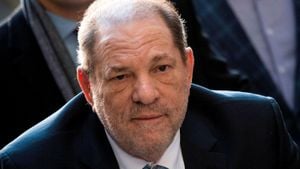Air quality has plummeted across India, particularly affecting its capital, Delhi, which is routinely engulfed by toxic smog, especially during the winter months. This pollution crisis has become so dire it has been described as more than just an environmental issue; it's regarded as a public health emergency. Each year, when the weather shifts, the usual conversation switches from the joys of winter to debates over air quality, health impacts, and the seeming indifference of politicians toward what many citizens see as a looming catastrophe.
Take Rubaab, for example. An 8-year-old living with chronic respiratory issues, he struggles to enjoy childhood due to the polluted air he breathes every day. Only able to go outside for brief periods, Rubaab finds himself trapped indoors, reliant on nebulizers whenever the thick smog rolls over the city. His experience is far from unique; numerous children across the National Capital Region (NCR) share similar stories, all tied to the depths of air pollution.
During November, Delhi regularly sees air quality dip to hazardous levels, impacting not only children's health but potentially leading to long-lasting consequences for the city's population. This sharp deterioration can be tied back to factors like stubble burning, rising vehicular emissions, and industrial discharge, which create the perfect storm for unhealthy air quality. According to recent research published by The Lancet Planetary Health, air pollution was responsible for over 7 percent of daily deaths across major Indian cities, and the statistics are stark: about 12,000 deaths annually citywide.
Over the years, air quality has become something of cyclical rhetoric, cycling through pointed discussions every winter and then fading away as politicians turn their focus to other pressing matters. This year, promises floated by political parties during the run-up to the 2024 Lok Sabha elections hardly touched on the health crises linked to air pollution. The BJP's manifesto included measures superficially addressing healthcare but failed to spotlight the need for cleaner air. With other parties touting similar bare-minimum protocols, it begs the question: why is air pollution not treated as the serious health emergency it is?
This recurring pattern may stem from multiple interconnected issues, namely the lack of political accountability, public demand, and societal responses. Even as numerous articles are written about the record-high air pollution levels, there is little actionable movement to push change forward. Civil society activism, once vibrant and at the forefront, seems to have wavered, failing to gain traction or evolve beyond sporadic events. Political economist T.T. Sreekumar notes the waning of civil society movements supporting environmental health and wonders why broader renditions of these issues have seemingly disappeared. "Whatever happens now are sporadic outbursts, which do not evolve to strong, sustained movements," he says.
The public's apparent disconnect from these monumental health risks doesn't just reflect their relationship with environment policy, but also indicates a broader societal problem. Author Ajay Gudavarthy highlights the absence of civic sense and accountability among the populace. He argues, "There is absolutely no civic sense. Leave air pollution aside, during Covid, when bodies were floating in the Ganga, there was no response, no questioning from the public. The state does not see it as its responsibility.”
The common sentiment for many citizens seems to resonate with the idea of low expectations. According to Gudavarthy, many individuals grapple with subsistence ethics, where any improvements from the state feel like bonuses rather than the standard. The perception is ingrained across various parts of society—there's almost an acceptance of survival within the current limited situations instead of aspiring for life on elevated terms.
And there's no denying the hard facts: the air quality metrics are grim, with pollutant levels dangerously higher than what the World Health Organization (WHO) deems acceptable. The particulate matter—tiny enough to infiltrate the bloodstream—spikes to levels up to sixty times higher than the WHO’s guidelines. For many, the explanation offers little consolation; newscasters report another smoggy day, schools close, and alarmingly, ambulances are seen rushing from one clinic to another.
What the citizens increasingly crave is accountability and initiative, yet often find themselves at odds with the political fabric of accountability. This lack of response not only reflects poorly on political systems but signals potential disasters waiting to happen, particularly with how government entities treat the overwhelming feedback loop of public health emergency versus political inertia.
To make matters worse, when actual community protests do arise, they often fizzle out without changing the ground game. Activist movements surrounding air quality and pollution have not blossomed, largely attributed toward both the pairs of unscrupulous practices by local industries and the fear of being labeled too radical. The attention tends to flutter away from pollution toward other pressing issues, from inflation to governance to more superficial concerns, which becomes disconcerting for activists advocating for the air quality of one of the world’s most populated regions.
So, what is to be done? Some experts recommend fostering public demands through campaigns aimed at empowering communities and enhancing civic engagement surrounding environmental policies. Rebuilding this connection could serve to remind society of its role as citizens, rather than fragmented communities, and help shift discourse around political approaches to health and environmental policy. "If we can promote civic imagination, then society will start talking about rights," Gudavarthy urges. Perhaps through such engagement, citizens can reshape their futures and demand responsibility from their leaders.
With the spotlight trained on air quality and public health, and more voices lending their cries for help across India, the glimmer of change could soon follow. But until then, as Rubaab and countless others await breathing easier, the atmosphere remains unbearably thick with smog and apathy from those meant to lead them out of it.



